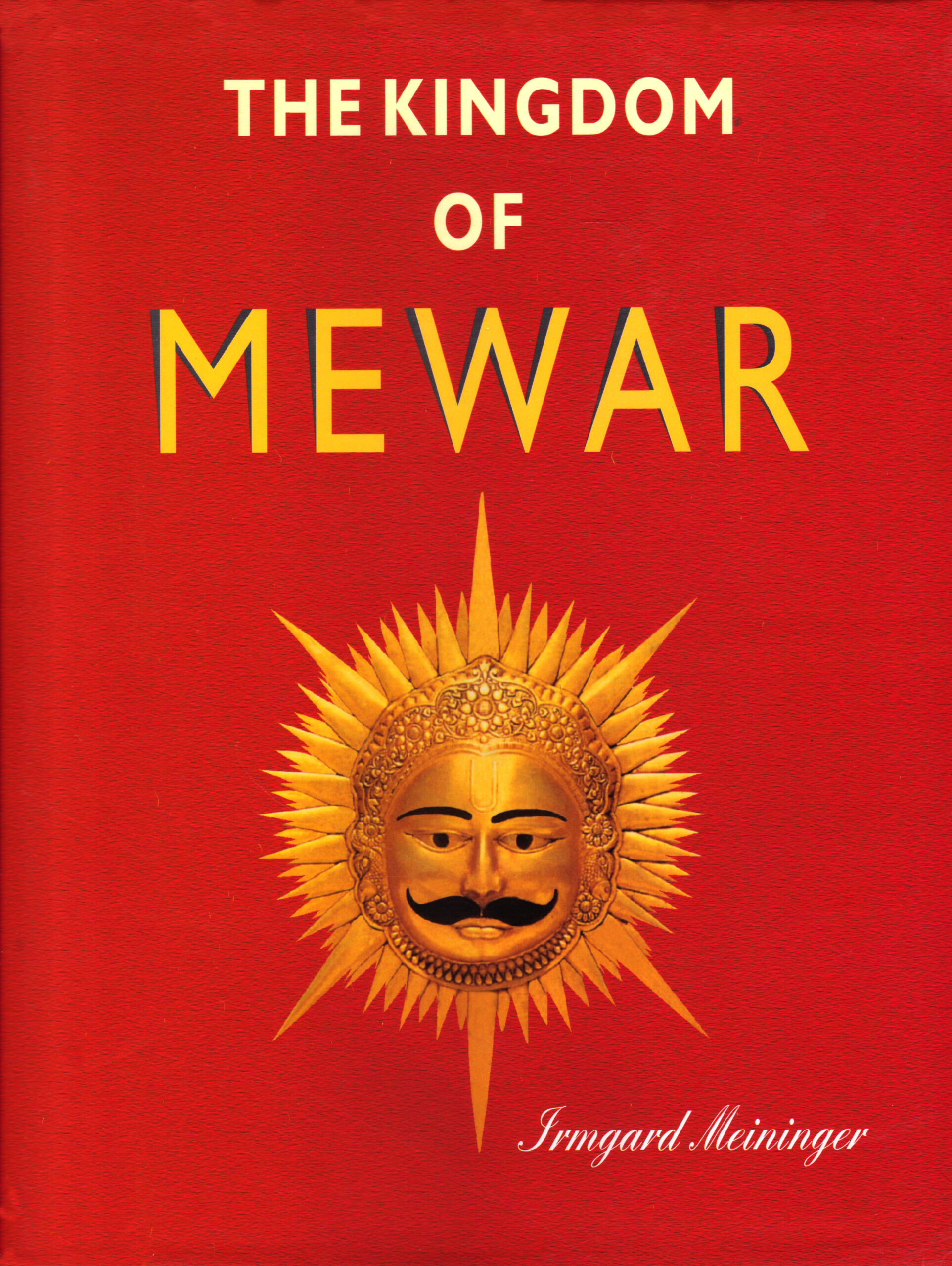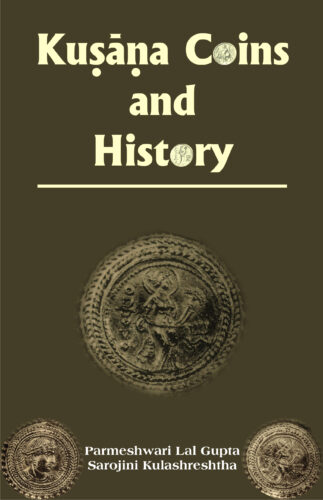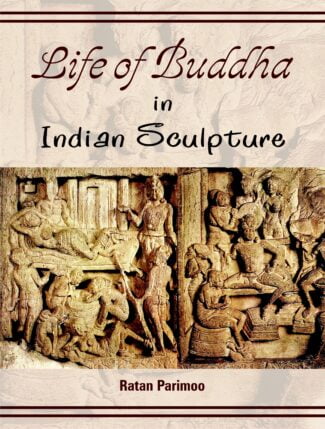Showing 161–170 of 384 results

The book presents stylistic perspectives on the music of nineteen modern and contemporary Khayàla vocalists representing five important legacies (Gharànàs) which have guided vocal music for about 200 years in India. The book makes complex musicological concepts accessible to even non-academic readers.
Khayala Vocalism: Continuity Within Change presents stylistic perspectives on the music of nineteen modern and contemporary Khayala vocalists, representing various legacies which have guided vocal music for about 200 years. The book is the result of over five years of research, involving the painstaking analysis of over 500 recordings spanning almost a hundred years of Khayala vocalism. The nineteen vocalists are classified into five stylistic legacies, based on their history of tutelage and the stylistic tendencies evident in their music: Agra legacy, Gwalior-Agra confluence, Jaipur-Atrauli legacy, Kairana legacy, and Patiala legacy. Written by an author of impeccable credentials as a musician, researcher and writer, the book contains seven sections. While the first section serves as an introduction to the Khayala genre and to the various Gharanas, the last presents an annexure containing the various Khayala forms, a glossary of non-English terms rendered in italics, and an index. The intervening five sections deal with the history and stylistics of the five legacies and the music of the vocalists belonging to them. The book makes complex musicological concepts accessible to non-academic readers and contributes significantly to widening the understanding of contemporary trends in Khayala vocalism.

Supported by beautiful illustrations, the study reconstructs the glorious history of the Rajput house of Mewar, perhaps the worlds oldest ruling family. It recounts its heroic battlefield engagements and examines its artistic and literary achievements.
A Premier princely state of Rajsthan, the erstwhile Rajputana (northwest India), till its merger into the Union territory in 1948, Mewar has been celebrated in history and legend. In this far-famed region are best represented not only the Rajput chivalry and high sense of honour, but also their arts, architecture, and fabulous cultural traditions. Developed from the authors four-year long intensive research, the book tries to reconstruct the unparalleled, glorious history of (perhaps) the worlds oldest ruling family: the house of Mewar now called the clan of Sisodias, in earliest times Guhilots. Tracing chronologically the entire course of events since their first known ancestor, Guhil (ad 566), Irmgard Meininger here unfolds a compelling story of brave Rajput men and women, with an exaggerated sense of honour, pride and independence the story of their triumphs and tragedies, and simultaneously of palace intrigues and rivalries, and of supreme sacrifies and treacheries. And yet, in the main, it is an exciting story of Mewars heroic resistance: first to Afghan/Arab adventures and Delhi Sultans and, in the later days, to the Mughal imperialists. Weaving into her narrative the legendary episodes around Maharani Padminis fabulous beauty, the dread rite jauhar, Panna Dais unique loyalty, and Princess Miras bhakti, among others, the author also attempts to show how Mewar has been the repository not only of old Hindu traditions, but of the enchanting Rajput culture as well, and how Rajputs, notwithstanding their endless engagements in the battlefield, were great patrons of art, architecture, literature and music. Supported by numerous beautiful illustrations, bibliographic references and a glossary of non-English words, the book will fascinate anyone interested in India, particularly Rajasthan: whether as an inquisitive reader, tourist, hostorian, or a connoisseur of art.

On the UNESCO List of World Heritage Sites, The Sun Temple of Konarka in Orissa represents the unique beauty and harmony of architecture and sculpture combined. The splendid photographs of the renowned Japanese photographer Oki Morihiro provides both, a visual delight and a scholarly insight and introduction to this great monument of Orissa.
One of the greatest treasures of Indian Temple architecture and on the UNESCO List of World Heritage Sites, The Sun Temple of Konarka on the East coast of Orissa stands as a witness to the cult of Surya. Even in its dilapidated condition it represents the unique beauty and harmony of architecture and sculpture combined. The present book attempts a fresh approach in understanding its symbolism. The splendid photographs of the renowned Japanese photographer Oki Morihiro bring out the grandeur of the conception of the chariot of the Sun God, and the excellence of its sculptures with delightful details. The volume is introduced by two scholars in the fields of Orissan temple architecture and archaeology. Bettina Bäumer in her introduction approaches the temple with a new interpretation, based on the Saura, Vedic and Tantric traditions, throwing light on its symbolism and its mystical dimension. M.A. Konishi places the temple in its historical and geographical context and its importance as a World Heritage. The book provides both, a visual delight by the excellent photographs, and a scholarly insight and introduction to this great monument of Orissa. It can well serve as a guide to understanding and appreciating the temple of Konarka.

Dr. P.L. Gupta examines myriad coins of the Kusanas to convincingly resolve the chronological puzzles of these Indo-Scythian kings from their rise in mid-2nd century ad to their extinction in ad 370.
The scions of a Central Asias nomadic tribe, (called Yueh-chi), KUSHANAS descended upon the plains of northern India sometime around the first century after Christ. And gradually built a great, vastly extensive empire in the Yamuno-Gangetic region. But, owing to a marked deficiency of indigenous literary sources, Kushana history has continued to be the sport of conjecture. Or, for the last 200 years or so, an area of chroniclers debate, involving scholars: both Indian and European. A numismatist of international renown, Dr. P.L. Gupta examines myriad coins of the Kushanas, including some of the very recent finds, to convincingly resolve the chronological puzzles of these Indo-Scythian kings: from their very rise in mid-second century ad to their final extinction in circa 370 ad. Corroborating the conclusions of his lifetime research on coins, with inscriptional material, he elicits fresh evidence on various important aspects of Kushana history: ranging from span of their era to the domains of their political authority. Barring the inclusion of two papers, written by Dr. Sarojini Kulashreshtha, this volume is an exquisite presentation of Dr. Guptas writings on numismatics and related historical aspects. Now offered with highly representative visual material, extensive bibliographic references, and an elaborate introduction, these papers, when pieced together, evolve a stimulating framework for the scholars working on Kushana history.

This publication with 100 quotes each supported by a thought provoking painting aims at making one realize that life is not as difficult as it seems if lived in the right spirit and a dignified way that encompasses love, kindness, care and compassion.
This publication with 100 quotes each supported by a thought provoking painting aims at making one realize that life is not as difficult as it seems if lived in the right spirit and a dignified way that encompasses love, kindness, care and compassion.

Dr. George Victor studies comprehensively Sankaracaryas teachings on Vedanta his views on scripture, perception and inference as pramanas or standards of knowledges; his explanations of the relation between Brahman and atman, Brahman and äsvara, maya and the world; and his concepts of jnana marga, karma marga and moksa.
Vedanta is recognised as the leading philosophy of the Vedic tradition. A major proponent of Vedanta was Shankaracarya who laid the basis for the propagation of Vedanta before the beginning of the Middle Ages. His contribution has been so immense and significant that often Vedanta has been interpreted as synonymous with Advaita Vedanta of Shankara.

Dr. George Victor studies comprehensively Sankaracaryas teachings on Vedanta his views on scripture, perception and inference as pramanas or standards of knowledges; his explanations of the relation between Brahman and atman, Brahman and äsvara, maya and the world; and his concepts of jnana marga, karma marga and moksa.
Vedanta is recognised as the leading philosophy of the Vedic tradition. A major proponent of Vedanta was Shankaracarya who laid the basis for the propagation of Vedanta before the beginning of the Middle Ages. His contribution has been so immense and significant that often Vedanta has been interpreted as synonymous with Advaita Vedanta of Shankara.

The book traces the beginning of narrative compositions in reliefs depicting the life of the Buddha and analyzes these sculptural depictions of events relating them to biographical texts on him. Supported by over 210 illustrations including drawings and photographs, the work reveals the process of symbolization in visual forms and participation of the sculptors in the process.
The life of the Buddha has been a great source of perennial inspiration to scholars, artists and poets since the early times. Many events from the life of the Buddha have inspired some of the greatest relief compositions in Indian art, which have been depicted in sculptures and monuments.
Tracing the beginning of narrative compositions in reliefs delineating the life of the Buddha, the book analyzes these sculptural depictions of events in the context of several biographical texts on him. The episodes represent the Buddhas birth, enlightenment, first sermon and miracle at Shravasti, descent from Tuùita heaven, subduing of Nalagiri, culminating with mahaparinirvana. The book explores how some of Buddhas basic teachings are linked with certain specific episodes of his life. It highlights the difference between representations of the same events by artists at various periods and places and the differences between the textual description and its sculptural counterpart. It also undertakes a survey of the inspiration provided by the theme of the Buddhas life to devotees and artists in other Asian countries as revealed in their iconography and sculpture.
Supported by over 210 illustrations including drawings and photographs, it reveals the process of symbolization in visual forms and participation of the sculptors in the process. It shows that the sculptural reliefs provide a fascinating insight into the creative mind of the Indian artist: how he invented visual devices and integrated them into the formal structure and the story content and imparted meanings in each sculptural relief. The volume will be essential reading for students and scholars of art history and Buddhist art in particular.

This edition of Bhagavad Gita elaborates how each of its chapters and even verses leads to the next one, all in line with the overall scheme of thought. Acknowledging Gita as a yoga-sastra (science of dialectics), it explicates how this methodological device strings together all the seemingly contradictory statements; revealing an ineffably uniting experience, befitting a scientifically and practically conceived non-dualism or advaita.
The Bhagavad Gita, in this commentary is realized as a philosophical treatise of universal significance, having a bearing on the personal existence of each of us, as it is inseparably one with the existence of the whole. Taking cognizance of the overall development of the thought in the text, it enunciates the first half as a visualization of the oneness of the total system of existence and life with one Absolute Reality; with the second half insightfully proclaiming the unity of every individual, while maintaining ones characteristics, with the Cosmic Form, the concrete version of the Absolute or Bhagavan. It elaborates how each of its chapters and even verses leads to the next one, all in line with the overall scheme of thought. Acknowledging Gita as a yoga-shastra (science of dialectics), it explicates how this methodological device strings together all the seemingly contradictory statements; revealing an ineffably uniting experience, befitting a scientifically and practically conceived non-dualism or advaita. Though written as a sort of varttika to Nataraja Gurus famous commentary on the Gita, this one is appreciable as an independent book, since it delves into the depth of each verse directly in the view of the core philosophical vision, the Gita intends to communicate.

This edition of Bhagavad Gita elaborates how each of its chapters and even verses leads to the next one, all in line with the overall scheme of thought. Acknowledging Gita as a yoga-sastra (science of dialectics), it explicates how this methodological device strings together all the seemingly contradictory statements; revealing an ineffably uniting experience, befitting a scientifically and practically conceived non-dualism or advaita.
The Bhagavad Gita, in this commentary is realized as a philosophical treatise of universal significance, having a bearing on the personal existence of each of us, as it is inseparably one with the existence of the whole. Taking cognizance of the overall development of the thought in the text, it enunciates the first half as a visualization of the oneness of the total system of existence and life with one Absolute Reality; with the second half insightfully proclaiming the unity of every individual, while maintaining ones characteristics, with the Cosmic Form, the concrete version of the Absolute or Bhagavan. It elaborates how each of its chapters and even verses leads to the next one, all in line with the overall scheme of thought. Acknowledging Gita as a yoga-shastra (science of dialectics), it explicates how this methodological device strings together all the seemingly contradictory statements; revealing an ineffably uniting experience, befitting a scientifically and practically conceived non-dualism or advaita. Though written as a sort of varttika to Nataraja Gurus famous commentary on the Gita, this one is appreciable as an independent book, since it delves into the depth of each verse directly in the view of the core philosophical vision, the Gita intends to communicate.
| There are no products |